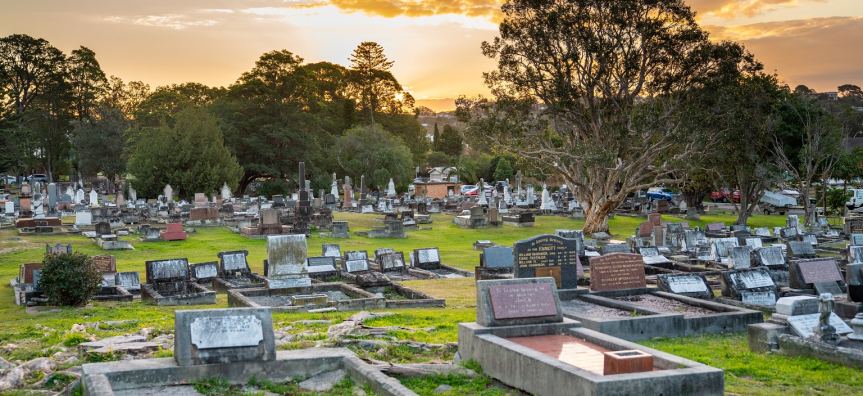Manly Cemetery is a place steeped in history.
Did you know it is the fourth oldest cemetery still in use in Sydney and the final resting place for many well-known locals?
Council needs your help to uncover some missing links to piece together some unsolved mysteries.
Four committed volunteers are helping Council’s Local Studies Team capture the history of over 9,000 people currently buried at Manly Cemetery.
To date, the group has uncovered details of around 900 interments, but they have a mammoth task ahead sourcing personal histories of the deceased, details of their fame or infamy, their war service, or family connections.
Relatives who may still be living on the Northern Beaches are encouraged to help with this project. Please call the local history team on 8495 6865 or send information to localhistory@northernbeaches.nsw.gov.au
Our cemetery services team is also keen to hear from relatives to update next of kin details. If you’d like to search for a relative in the cemetery, you can use the deceased search on Council’s cemetery page.
Manly Cemetery has been operating since the 1870s and contains over 6,000 graves.
Check out some of the famous individuals buried at the cemetery.
Elizabeth Wheeler
Elizabeth Wheeler and her husband James Wheeler were some of the earliest European inhabitants of the Narrabeen area. Their farm was located on the southern side of Narrabeen Lagoon where they lived with their nine children. Here they built their homestead in 1849 clearing part of their land to grow potatoes and cabbages which they sold at Sydney markets. They also hired out boats from the little beach in front of their home.
James died in 1890 and was buried at the homestead but when Elizabeth died in 1906 aged 92 years, home burials were no longer allowed, so she was buried in Manly Cemetery.
The suburb of Wheeler Heights and the street called James Wheeler Place is named in their honour. Mrs. Wheeler is in Manly Cemetery in the Church of England area, Section B. No.192
William and Eleanor Parker
William Frederick Parker purchased over 150 acres on Old Pittwater Road in the 1830s. His farm lay in a vale near a brook, and he named his farm “Brookvale Farm”. On part of this land, near the corner of what is now William Street, he built the family home which he named “Meadowbank”.
His farm covered most of what is today occupied by Warringah Mall plus land on both sides of Pittwater Road near Robert Street.
Parker farmed his land until his death in 1892. Their daughter Sarah Jane died in 1869 and was buried in Manly cemetery. Eleanor died in 1880. All three names are on the one headstone in Manly Cemetery. General area, Section S, No.168.
Tom Richards
One of the great Australian rugby forwards. His story is told in Greg Growden’s Mud, Guts, and Glory. Tom played for Queensland in 1907 and was chosen for the Australian team soon after. He completed in the 1908 Olympic Games in the only rugby match of the tournament, between England and Australia, scoring a try that helped to secure the win.
He was also a founding member of Manly Life Saving Club and Manly Rugby Union Club.
To add to his accolades, Tom served in World War I at Gallipoli and on the Western Front. He was acknowledged for these efforts by being awarded the Military Cross for leading a successful bombing raid on enemy trenches.
Tom Richards died on 25 September 1935, aged 53. His ashes were interred in a family grave, in the General area, Section Z, Grave No. 373.

